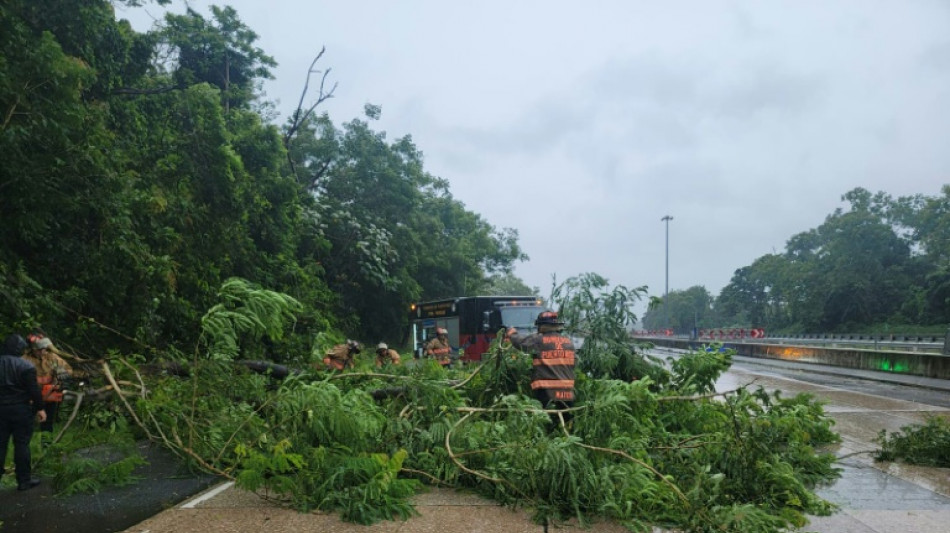
RBGPF
0.1600


Hurricane Fiona made landfall Sunday on Puerto Rico's southwestern coast, knocking out power and threatening to cause "catastrophic flooding" in the US island territory.
Sustained winds of 85 miles (140 kilometers) per hour classified the storm as a Category 1 hurricane, at the low end of the Saffir-Simpson scale.
But further strengthening is predicted over the next 48 hours as Fiona approaches the Dominican Republic before heading north into the open waters of the Atlantic Ocean.
The US National Hurricane Center (NHC) said "catastrophic flooding" was expected both in Puerto Rico and in the Dominican Republic, to the west.
The National Weather Service's San Juan office warned on Twitter of "life-threatening flash flooding of streams, highways and streets, as well as urban, low-lying and poorly drained areas."
Puerto Rico lost all power as Fiona neared, Governor Pedro Pierluisi said in a statement posted on Twitter.
"Due to the effect of the hurricane, the electrical system is currently out of service," he said.
Local news sources reported widespread flooding in the island's southeast, with many roads under water.
In the town of Utuado, in Puerto Rico's mountainous center region, a family saw the zinc roof of its house -- ripped off in 2017 by Hurricane Maria, then replaced -- torn off yet again.
The NHC also issued a tropical storm warning for the US Virgin Islands and the British Virgin Islands, meaning maximum sustained winds of 39 to 73 miles per hour are expected there.
The storm has already caused a fatality, with a man left dead when his house was swept away by flooding in the French overseas department of Guadeloupe, when Fiona was still classified as a tropical storm.
US President Joe Biden declared a state of emergency for Puerto Rico on Sunday, authorizing the Federal Emergency Management Agency to provide assistance.
- 'Go to shelters' -
Pierluisi told a news conference the previous day that "we are asking residents not to leave their homes and to go to shelters if they are in areas prone to landslides and flooding."
The island -- which has suffered from major infrastructure problems for years -- was hit by hurricanes Irma and Maria in 2017, devastating its electrical grid.
The grid was privatized in June 2021 in an effort to resolve the problem of blackouts, but the issue has persisted, and the entire island lost power earlier this year.
The former Spanish colony became a US territory in the late 19th century before gaining the status of associated free state in 1950.
After years of financial woes and recession, in 2017 the island declared the largest bankruptcy ever by a local US administration. Later that year, hurricanes Irma and Maria added to the island's woes, and sparked a feud between San Juan and Washington.
Then-president Donald Trump's administration was widely accused of failing to provide sufficient federal aid to Puerto Rico after Hurricane Maria struck.
Footage of him tossing paper towels to survivors during a visit to the island drew criticism, and Trump later claimed the storm's death toll had been inflated by Democrats to "make me look as bad as possible."
M.Sugiyama--JT